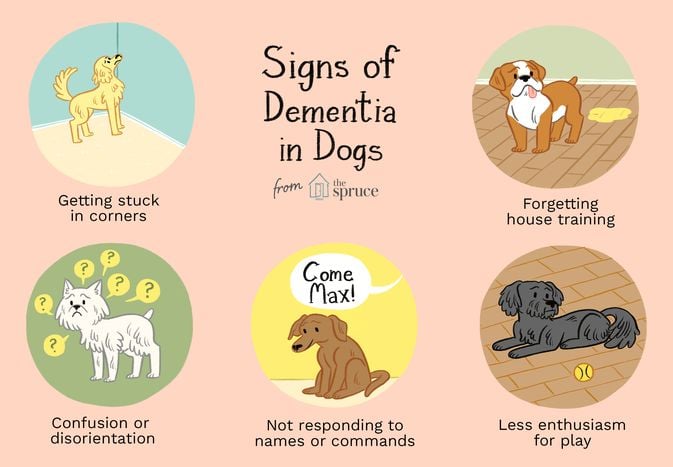Even though they aren't able to hear commands, deaf dogs can be trained to obey their owners. Of course, this process is different from training a hearing dog and comes with its own set of challenges. Training a deaf dog requires a bit of extra patience, but it's not outside the capability of most dog owners.
Some dogs are more prone to deafness than others. Dalmatians, English setters, and Australian cattle dogs seem to have high instances of congenital (present at birth) deafness. Some dogs only begin to lose their hearing as they reach their senior years.
For puppies who don't yet have hearing problems, consider incorporating hand gestures with voice commands when you train them. That way, if your dog loses hearing in old age, he is already familiar with the signs for the various commands.
Getting the Attention of a Deaf Dog
Before you can ask a dog to do anything, you must first have the dog's attention. Since you can't call his name like you can with a hearing dog, you'll need to think of other ways to grab your dog's attention.
There are a few things you can do to get a deaf dog to look at you, such as stamping your foot on the floor. Sometimes the vibrations coming through the floor are enough to turn your dog's attention in your direction.
Use a Flashlight
Some owners of deaf dogs use a flashlight to signal to their dog. You can train a dog to look at you by turning a flashlight on and off. Continue to do so until your dog turns to see where the light is coming from. As soon as the dog looks at you, reward him with a treat. The dog will soon learn that a flash of light means that he needs to look at you.
Use a Vibrating Collar
These electronic collars are different from those that give shocks to aid in training (which you want to avoid because they provide negative reinforcement to the dog). These simply vibrate painlessly when you press a button on a remote.
You can train a dog to look at you by pressing the button to make the collar vibrate, and continue doing so until your dog looks at you. As soon as the dog turns its attention to you, stop the vibrations and offer a treat. One of the benefits of using the vibrating electronic collar is that you can use it in just about any situation.
Try Hand Signals
Many people train dogs by using hand signals for basic obedience commands. There is a standard hand signal most dog trainers use to teach each command, but you can also create your own hand signals.
Instead of giving a solely spoken command, you start off by making sure your dog's attention is on you, and then give the hand signal. You then train the dog to perform the command just as you would any other dog.
Use Sign Language
Most people communicate with their dogs for more than the basic commands, learning from the repeated connection between the words and the actions. You can communicate in a similar way with a deaf dog, but rather than using spoken words, you can use sign language.
Many owners of deaf dogs find it useful to learn a few simple words in American Sign Language and use them when doing everyday tasks with their dogs. You can also create your own signs for different words. As long as you and your dog know what the sign means, you should be able to communicate easily.
Reward Good Behavior
While many dogs find it rewarding to get verbal praise from their owners, this obviously won't work for deaf dogs. Keep some small treats on hand to give your deaf dog positive reinforcement when it obeys a command correctly. Non-verbal forms of praise like petting or ear scratches can be helpful as well.
Once your dog has a good understanding of each command, you can use treats less frequently. Be sure in the early days of training, when you're using a lot of treats, that you cut back on your dog's meals accordingly.
Keep Deaf Dogs Leashed
Some people love taking off-leash walks with their dogs. It's debatable whether or not this is a good idea in any situation, but it's never a good idea to allow your deaf dog off the leash in unfenced areas.
Even the most well-trained dog can get distracted, and you can't simply use a come command or an emergency recall to keep a deaf dog from a dangerous situation. For the dog's safety, keep him on a leash.
Problems and Proofing Behavior
Deaf dogs may be initially startled by a person unexpectedly touching them to gain their attention, especially if they are touched while sleeping. Startling a dog can lead to it snarling or snapping out of fear, much in the same way a person might yell out if someone sneaks up and startles them.
Practice touching your dog very gently on the shoulder and back. Give treats immediately following the touch. Try to do this often throughout the day, and soon your dog will learn that having someone touch them from behind means good things are about to happen.
A common mistake many new owners of deaf dogs make is not talking while they give their non-verbal commands. Just because the dog can't hear you doesn't mean you should remain silent; often your body language can appear unnatural if you give a command silently.
To ensure the visual commands come naturally to you and translate easily to your dog, go ahead and speak the words of a command as you perform the action.
Edited by Jenna Stregowski, RVT










Comments on " How to Train Your Deaf Dog" :